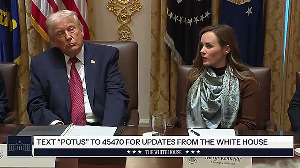Among the various roles and skills of a CEO, the most important is perhaps his ability to observe things. He should be able to sit at the periphery of his organisation and observe, and then get back and act upon his observation.
F Zobrist, CEO of FAVI, France, has said about breakthrough leaders that they should stand at the organisation's boundary and bring in outside information. They must also communicate their company's philosophy to the outside world.
In their book Breakthrough Management, Shoji Shiba and David Walden have defined the eight principles of visionary leadership as follows:
Principle 1: The visionary leader must do on-site observation leading to personal perception of changes in societal values from an outsider's point of view.
Principle 2: Even though there is resistance, never give up; squeeze the resistance between outside-in pressure in combination with top-down inside instruction.
Principle 3: Transformation is begun with symbolic disruption of the old or traditional system through top-down efforts to create chaos within the organisation.
Principle 4: The direction of transformation is illustrated aimed by a symbolic visible image and the visionary leader's symbolic behaviour.
Principle 5: Quickly establishing new physical, organisational and behavioural systems is essential for successful transformation.
Principle 6: Real change leaders are necessary to enable transformation.
Principle 7: Create an innovative system to provide feedback from results.
Principle 8: Create a daily operation system, including a new work structure, new approach to human capabilities and improvement activities.
A true visionary leader must, therefore, train himself to perceive the future societal needs with a business perspective. Viewing the organisation as an outsider, the CEO is best placed to get a fresh perspective and perceive future societal requirements. A fresh perspective requires the CEO to forget about the existing customer and look at the entire world as the future market.
Often, new ideas sound extremely crazy and face resistance. Therefore, an important principle for the visionary leader is to never give up. To this end, he may communicate his idea to the outside world and create an "outside-in" pressure.
For instance, in the case of the Roadstar automobile project, Matsuda, the project leader, was facing immense internal resistance. He conducted a pilot test with potential users, which revealed a positive interest in the vehicle being designed by him. Post this survey, the project received all internal support and the vehicle went on to be awarded the "Car of the Year".
The visionary CEO needs to create a strong belief in societal change and a philosophy on how the business must be transformed. To be able to perceive the societal change, he needs to be skilled in perceiving what is happening in the organisation in the context of the larger societal perspective.
In leading such transformation of the organisation, the CEO needs to relentlessly work towards putting in place a new mental model, leading to a paradigm shift in mindsets and begin to force change in line with the new direction of the organisation.
Symbolic disruption could be pulling down an old building, replacing it with a new building with a completely untraditional architecture.
However, while undertaking such symbolic changes, the CEO must ensure that symbols reflective of the company's core values are not destroyed. Even as an organisation undergoes transformation, its core value system must always remain firmly rooted.
The visible images of goals work on the subconscious of the target group and are, therefore, extremely important.
For instance, when John F Kennedy gave the US the mission to put a man on the moon, he created a visible image of this in every American's mind and, in those days, even a person who was sweeping an office in the US believed that he was working towards putting a man on the moon.
Any task is that much more difficult if attempted alone. Therefore, the CEO needs the support of what Shiba calls "real change leaders" - people who will help him diffuse the transformation philosophy even while he is not present. They make the implementation of the transformation real so that the transformation does not remain a mere idea of the visionary CEO.
Most importantly, the CEO must focus on creating an organisation with a noble goal and a place that enables the team to realise not only the breakthrough but also their personal dreams in the process.
Dr Surinder Kapur is chairman, CII Mission for Manufacturing Innovation, and chairman and managing director, Sona Koyo Steering Systems






